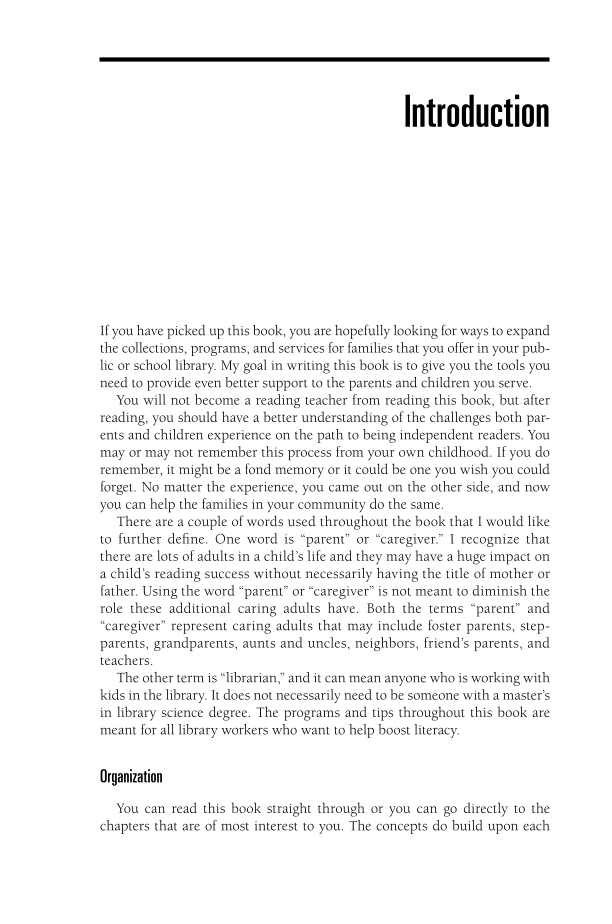Introduction If you have picked up this book, you are hopefully looking for ways to expand the collections, programs, and services for families that you offer in your pub- lic or school library. My goal in writing this book is to give you the tools you need to provide even better support to the parents and children you serve. You will not become a reading teacher from reading this book, but after reading, you should have a better understanding of the challenges both par- ents and children experience on the path to being independent readers. You may or may not remember this process from your own childhood. If you do remember, it might be a fond memory or it could be one you wish you could forget. No matter the experience, you came out on the other side, and now you can help the families in your community do the same. There are a couple of words used throughout the book that I would like to further defi ne. One word is “parent” or “caregiver.” I recognize that there are lots of adults in a child’s life and they may have a huge impact on a child’s reading success without necessarily having the title of mother or father. Using the word “parent” or “caregiver” is not meant to diminish the role these additional caring adults have. Both the terms “parent” and “caregiver” represent caring adults that may include foster parents, step- parents, grandparents, aunts and uncles, neighbors, friend’s parents, and teachers. The other term is “librarian,” and it can mean anyone who is working with kids in the library. It does not necessarily need to be someone with a master’s in library science degree. The programs and tips throughout this book are meant for all library workers who want to help boost literacy. Organization You can read this book straight through or you can go directly to the chapters that are of most interest to you. The concepts do build upon each
Document Details My Account Print multiple pages
Print
You have printed 0 times in the last 24 hours.
Your print count will reset on at .
You may print 0 more time(s) before then.
You may print a maximum of 0 pages at a time.
































































































































































































































